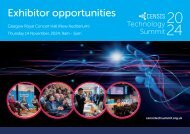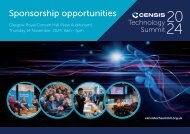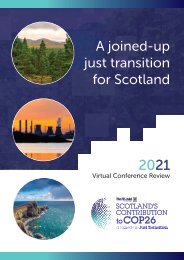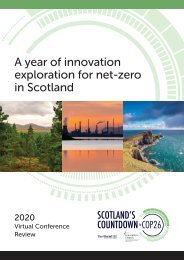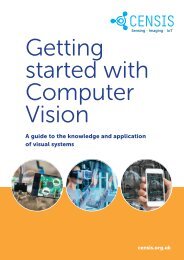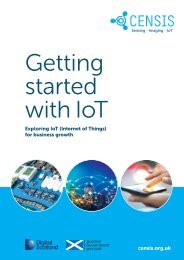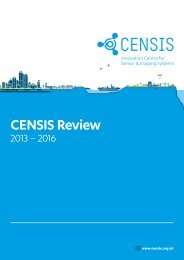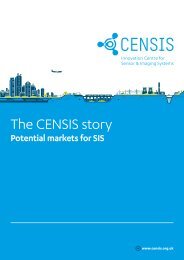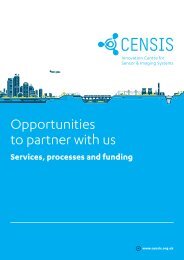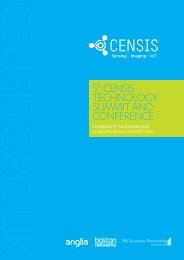CENSIS white paper: Intellectual Property in Business
2023: This CENSIS white paper sets out to make the topic of IP more approachable, less intimidating and more manageable, offering experience-based advice and methods are are designed to help businesses structure their IP- related issues and makes the best of their IP. Covering: The role of IP, IP management during growth, IP strategy for expanding companies and corporates, Business IP Canvas - merging IP with your business model.
2023: This CENSIS white paper sets out to make the topic of IP more approachable, less intimidating and more manageable, offering experience-based advice and methods are are designed to help businesses structure their IP- related issues and makes the best of their IP.
Covering:
The role of IP, IP management during growth, IP strategy for expanding companies and corporates, Business IP Canvas - merging IP with your business model.
You also want an ePaper? Increase the reach of your titles
YUMPU automatically turns print PDFs into web optimized ePapers that Google loves.
<strong>Intellectual</strong> <strong>Property</strong> <strong>in</strong> Bus<strong>in</strong>ess: IP basics, IP management, IP strategy<br />
IP Management dur<strong>in</strong>g Growth (cont<strong>in</strong>ued)<br />
Table 10 44 showcases the competitive advantages<br />
of open-source models <strong>in</strong> comparison with closedsource-based<br />
models. ‘Gen 1’ stands for the first<br />
generation of open-source bus<strong>in</strong>ess models where<br />
bus<strong>in</strong>esses were based on the model that only parts<br />
of the software were licensed for free: to use the<br />
other parts, customers had to acquire a commercial<br />
charge-based licence (open and proprietary software<br />
components, dual licens<strong>in</strong>g bus<strong>in</strong>ess models). An<br />
obvious step for the competition <strong>in</strong> that case was to<br />
offer even bigger portions of the software without<br />
charge. With the advent of cloud-based services, the<br />
open-source bus<strong>in</strong>esses shifted towards Software-as-a-<br />
Service (SaaS) opportunities. Current Gen 3 bus<strong>in</strong>esses<br />
offer their products as a cloud service from early on<br />
(SaaS). This sett<strong>in</strong>g allows for diverse commercialisation<br />
models that smoothly merge open-source and<br />
proprietary software (<strong>in</strong> various proportions). SaaS also<br />
works to the advantage of the customers who are<br />
(f<strong>in</strong>ally) liberated from the need to purchase (and deal<br />
with) multiple licences. 45<br />
Table 10: Competitive advantages of the open-source model<br />
Bus<strong>in</strong>ess Attribute Gen 3 Open Source (2019) Gen 1 Open Source (2009) Closed Source<br />
Market Size Large Small Large<br />
Innovation Velocity High High Low<br />
Customer Acquisition Costs Low Low High<br />
Average Sell<strong>in</strong>g Price (ASP) Low Very Low High<br />
Market Elasticity High High Low<br />
Customer Lock-<strong>in</strong> Low None High<br />
Cost of Development Low Very Low High<br />
Lifestyle Value High Low High<br />
Cloud First High Low Low<br />
Bus<strong>in</strong>ess Value High Mid Mid<br />
44<br />
Mike Volpi, ‘How open source software took over the world’ (TechCrunch, 12 January 2019)<br />
accessed 2 December 2022.<br />
45<br />
Ibid.<br />
31




